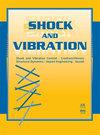环形连接管特性对膨胀式排气消声器传输损耗的影响研究
IF 1.2
4区 工程技术
Q3 ACOUSTICS
引用次数: 0
摘要
为了拓宽排气消声器低频范围内的消声频带,达到宽带降噪的目的,本文提出了一种环形连通管消声器模型,利用有限元法(FEM)模拟非反射边界条件,求解传输损耗(TL)。此外,还通过空间五点测量法获得了实验值,并与模拟值进行了比较,验证了求解模型的有效性和可靠性。与简单的膨胀式消声器相比,环形连接管消声器的平均 TL 增加了 11.86 dB,最大 TL 增加了 18.31 dB,有效拓宽了消声器的频率区域,整体性能得到有效改善。最后,分析了环形连接管的宽度(W)、环形连接管的长度(L)以及前后腔体的长度比(m)等结构因素对 TL 和消声频带宽度的影响。结果表明,环形连接管的宽度和长度以及前后腔长度比分别是影响 TL、消声频带以及消除或降低通过频率的最主要因素。本文章由计算机程序翻译,如有差异,请以英文原文为准。
Research on the Influence of Characteristics of the Annular Connecting Pipe on the Transmission Loss of the Expanded Exhaust Muffler
In order to broaden the muffler frequency band in the low-frequency range of the exhaust muffler and to achieve the purpose of broadband noise reduction, in this paper, a model of an annular connecting pipe muffler is proposed using the finite element method (FEM) to simulate the nonreflection boundary condition and to solve the transmission loss (TL). In addition, the experimental value is obtained by the spatial five-point measurement method and compared with the simulated value, and the validity and reliability of the solution model are verified. Compared with a simple expansion muffler, the average TL of the annular connecting pipe muffler is increased by 11.86 dB, and the maximum TL is increased by 18.31 dB, effectively widening the muffler frequency area, and the overall performance is effectively improved. Finally, the influence of structural factors is analyzed, including the width (W) of the annular connecting pipe, the length (L) of the annular connecting pipe, and the length ratio (m) of the front and rear chambers on the TL and on the width of the anechoic frequency band. The results reveal that the width and length of the annular connecting pipe and front-to-back cavity length ratio are the most significant factors to influence the TL, muffler frequency band, and elimination or reduction of the passing frequency, respectively.
求助全文
通过发布文献求助,成功后即可免费获取论文全文。
去求助
来源期刊

Shock and Vibration
物理-工程:机械
CiteScore
3.40
自引率
6.20%
发文量
384
审稿时长
3 months
期刊介绍:
Shock and Vibration publishes papers on all aspects of shock and vibration, especially in relation to civil, mechanical and aerospace engineering applications, as well as transport, materials and geoscience. Papers may be theoretical or experimental, and either fundamental or highly applied.
 求助内容:
求助内容: 应助结果提醒方式:
应助结果提醒方式:


